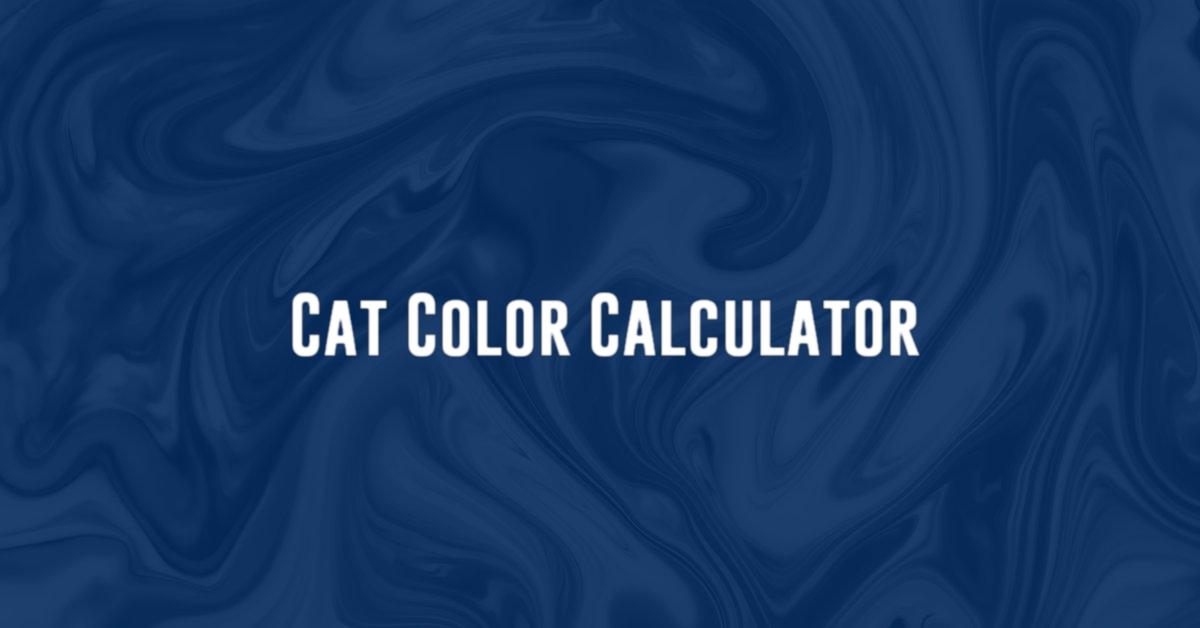Puppy Color Calculator
Are you curious about what color your new puppy might be when they grow up? With the help of a puppy color calculator, you can get a rough idea of what to expect. This handy tool uses genetics to predict potential coat colors based on the parents’ genes. Keep reading to learn more about how the puppy color calculator works and how to use it.
Understanding Canine Genetics
Before using a puppy color calculator, it’s essential to understand a bit about canine genetics. Dogs inherit their coat colors from their parents, much like humans inherit traits from their parents. There are two primary pigments that determine a dog’s coat color: eumelanin (black) and pheomelanin (red and yellow).

Eumelanin is responsible for black, liver, and blue colors, while pheomelanin produces red and yellow colors. The amount and distribution of these pigments in a dog’s fur determine its final coat color. Additionally, there are other genes that can affect coat color, such as the dilution gene, which lightens colors, and the merle gene, which creates a marbled or dappled pattern.
How Does a Puppy Color Calculator Work?
A puppy color calculator uses basic principles of genetics to predict possible coat colors of offspring based on the parents’ genes. These calculators consider the parents’ genotype (the genetic makeup) and use Punnett squares to determine the potential outcomes. By inputting the parents’ coat colors and patterns, you can get a rough idea of what colors their puppies might inherit.
It’s important to remember that a puppy color calculator can only provide probabilities and predictions. The actual coat color of a puppy is influenced by several genetic factors and can vary widely, even among siblings. Additionally, external factors such as diet, health, and age can also impact a dog’s coat color and markings.
Using a Puppy Color Calculator
To use a puppy color calculator, you’ll need to know the coat colors and patterns of the parents. Most calculators will ask for information such as the parents’ breed, coat colors, and patterns (solid, parti, merle, etc.). Some calculators may also require specific details about the parents’ genetics, such as whether they carry recessive genes for certain colors.
Once you input the necessary information, the calculator will generate a list of potential coat colors for the offspring. Keep in mind that these results are just predictions and that the actual outcome may vary. It’s always best to consult with a veterinarian or geneticist for more accurate information about your puppy’s coat color genetics.
Factors That Influence Coat Color
While genetics play a significant role in determining a dog’s coat color, several other factors can also influence the final outcome. Some of these factors include:
- Diet: A balanced diet rich in essential nutrients can help maintain a healthy coat and vibrant colors.
- Health: Certain health conditions or medications can affect a dog’s coat color and texture.
- Age: A puppy’s coat color can change as they mature and go through different stages of development.
- Environment: Sun exposure and other environmental factors can impact a dog’s coat color and intensity.
It’s essential to provide proper care and nutrition to your puppy to ensure they have a healthy coat and maintain their colors as they grow.
Popular Coat Colors and Patterns
While there are countless coat colors and patterns that dogs can have, some are more common and well-known than others. Here are a few popular coat colors and patterns that you might come across:
- Black: A solid black coat is a classic and timeless look in many breeds.
- Golden: A golden coat can range from a light cream color to a deep, rich gold shade.
- Merle: The merle pattern creates a marbled or dappled look with patches of color on a white background.
- Brindle: Brindle coats feature tiger-like stripes on a base color, such as black, brown, or fawn.
- Parti-color: Parti-colored dogs have patches of two or more colors, creating a unique and eye-catching appearance.
Remember that coat colors and patterns can vary widely within breeds and even among individual dogs within the same litter. While genetics play a significant role, the final outcome is often a mix of both parents’ genes and other influencing factors.
Conclusion
Using a puppy color calculator can be a fun and educational way to predict what color your new furry friend might be. While these calculators provide useful insights based on genetics, it’s essential to remember that the actual outcome can vary. Factors such as diet, health, and environment can also impact a dog’s coat color and appearance.
By understanding the basics of canine genetics and how coat colors are inherited, you can make more informed decisions about breeding, grooming, and caring for your pet. Whether your puppy ends up with a classic black coat or a unique brindle pattern, their colors will add to their individuality and charm.






